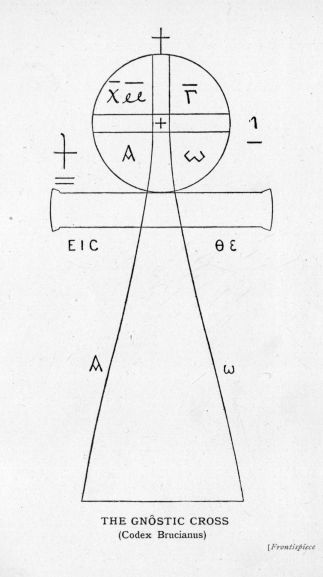Context Shifting in the “Gospel of Thomas”
By
Tom Saunders, B.A. /B.S. Certified Linguist
Long before I understood that the “Gospel of Thomas” was a Gnostic text, like many others, I read Thomas and drew the predicate context from my own experiences with religious teaching. Then I figured out that the Thomas gospel is aligned closely to the Gnostic philosophies, epistemology, and metaphysics presented in the other Nag Hammadi Library texts.
Both Irenaeus, and Hippolytus present evidence in their anti-Gnostic works that the Naassenes who started the Apostle’s Village in Jerusalem had some important texts. One was a no longer extant “Gospel of Matthew;” they had the “Gospel of Thomas,” “The Gospel of the Egyptians,” and “The Apocryphon (Secret Book) of John.” These texts form the basis for the Gnostic epistemology. These texts can be found in the Nag Hammadi Library.
The first passage in the “Gospel of Thomas” reads:
“These are the Secret Sayings which the living Jesus spoke and which Didymos Judas Thomas wrote down.” (GThom)
What makes the Secret Sayings secret is if you cannot “context shift” the meanings of the sayings so the predicate context of the passages is Gnostic, you may miss the meaning of the sayings.
Words in Gnostic passages like spirit, soul, life, and word have tripartite meanings composed of mathematical, gematric, and literal contexts. Words like spirit, soul, life, and word, have hidden or secret meanings relative to the study of the Gnostic Aeonology. All of these words can serve as Aeon-Monads and grow with others to form sequences and matrices.
The Gnostic Aeonology is very much like Chinese Ba Gua (trigram) science. Christian Gnostics learned the same binary system which was used to construct the “I Ching.” This construction is blueprinted by the Tai Chi icon which is the Yin and Yang icon surrounded by eight ba gua also known as trigrams. The “I Ching” puts sets of eight things together to 64 trigrams which form into one thing. If you can read a Ba Gua sequence you can read an Aeon sequence, I’ve checked.
Instead of the term “Chi,” Gnostics use the term “Aeon” and they both mean virtually the same thing. There is no evidence I have seen that the Gnostics used the Heaven Sequence to construct Ogdoads, but both cultures used Ogdoads for very similar things, like building “memory palaces” and developing other skills. Gnostics called the term for the study of how Aeons affect the mind and body, “Kinetikos.” Loa Tzu explains the attributes of the Tai Chi system in his work the “Hua Hu Ching.”
The “Sacred Tetrad” is a Gnostic work that forms a memory palace where four Aeon-Monads, (Word, Life, Man, Church) turns into two decads, and two dodecads forming a 44 unit Aeon matrix. This construction is made of all the good attributes of Jesus. Two works reflect knowledge of this construction, “A Valentinian Exposition” which is refuted by Tertullian in his “Against the Valentinians.” Valentinus wrote is work much earlier in the 2nd century and would have died before Tertullian wrote his work.
There is a bump in the road for most people who try to read and understand works like the “Gospel of the Egyptians” and “The Apocryphon of John.” Both the anti-Gnostic works by Irenaeus, Hippolytus, Tertullian, and the Nag Hammadi Library use the unique vocabulary below relative to the Aeonology.
In order to do the correct context shifting you need to learn what the following terms mean in the list below relative to the flow of Aeons. These terms are in the “Gospel of the Egyptians,” and John’s “Secret Book” which tells how Jesus gained divinity:
(Abrasax, Adonaios, Aeons, Aphredon, Archons, Armedon, Armozel, Astraphaios, Autogenes, Barbelo, Bridal Chamber, Davithai, (Domedon) Doxomedon, Demiurge, Echamoth (Achamoth), Eleleth, Ennoia, Iao/Jeu, Gamaliel, Garment, Hebdomad, Kaliptos, Logos, Marsanes, Mirotheos, Monad, Ogdoad, Oriel, Pistis, Pleroma, Protennoia, Protophanes, Sabaoth, Saklas, Sophia, Totalities, Yaldabaoth, Youel) Note: There are variations for some spellings in the above list. (“Saunders Sethian-Valentinian Glossary”)
All of the above terms are applied to a single tripartite algorithm, (Monad/A=C) (Duad/A=B = B=C) (Triad synthesis/ A= B = C) =1. This algorithm is the formula for the emanation of all Aeons from the formation of the Monad to Duad, to Triad, to Tetrad, to Hexad, to Hebdomad, to Ogdoad and on up. All human emotions can be blueprinted to the formation of the Hebdomad. The power of Jesus as a divine entity is the power to control the Archons (Ogdoads) to use good to fight evil. Jesus has the power over Aeon-Hebdomads, good or evil.
There is evidence that earlier versions of the “Gospel of Thomas” used the term Aeon in logion 4. Hippolytus recorded a version of this passage in “Against All Heresies.” The Thomas passage was changed by later Valentinian scribes in the second century. The mention of Aeons in any early Christian work is a definite sign the work is Gnostic.
“The one who seeks me will find me in children from seven years of age and onwards. For there, hiding in the Fourteenth Aeon, I am revealed.” (Hippolytus, Ref. 5.7.20, GThom L-4)
Gnostic Christianity is not monster-free. Chapter Eight of the “Gospel of Mary” reveals the “Seven Powers of Wrath.” If you know something about the Aeonology and studied G.R.S. Mead’s work, it is no problem to understand Wrath in Mary is a description of the construction of an Aeon-Hebdomad emanation.
G.R.S. Mead writes, “In his Aeonology, Simon, like other Gnostic teachers, begins with the Word, the Logos, which springs up from the Depths of the Unknown-Invisible, Incomprehensible Silence…
…The Word, then, issuing from Silence is first a Monad, then a Duad, a Triad (Pythagorean Trivium) and a Hebdomad (trivium-quadrivium). For no sooner has differentiation commenced in it, and it passes from the state of Oneness, than the Duadic and Triadic state immediately supervene, arising, so to say, simultaneously in the mind, for the mind cannot rest on Duality, but is forced by a law of its nature to rest only on the joint emanation of the Two. Thus the first natural resting point is the Trinity. The next is the Hebdomad.” (G.R.S. Mead, “Simon Magus.”)
The context of the Monad to Hebdomad construction for good or evil emotions works well with how modern Linguists see “context shifting and attitude contexts…”
“Kaplan (1989) speculated that natural language was ‘monster-free;’ that it lacks operators that manipulate contexts, understood in the Kaplanian way as tuples of indices relating to the agent of the utterance, the time of utterance, and so forth. Schlenker (2003) showed convincingly that there are monsters after all. However, both Schlenker and Kaplan mostly consider attitude contexts. This means that, while we can be sure that there are monsters lurking in the attitudes, it is not clear where else they may be found.” (“Context Shifting in Questions and Elsewhere” by McCready)
Gnostics put the ‘attitude monsters’ in the Evil Matrix of Seven Powers who have seven powers. Wrath, Lust, Hate, Envy, Grief, Lies, and Fear can all be put in the Aeon-Hebdomad blueprint matrix. Further, if you study the Aeonology and the formation of hebdomads, you can learn to manipulate the 7×7 matrix. It is beyond the scope of this work to try and teach the Aeonology but understanding part of it explains how Gnostics understood Word or Logos as emanations.
Logos; The term for Sethians and Valentinians can be synonymous with the Word of God as an emanation of truth, or as a reflection of man’s divine or Aeon form in the Pleroma. In both Sethian and Platonic Christian Gnosticism logos refers to a system of order, reason, and knowledge. Aristotle characterized logos as an examination of a premise using both inductive and deductive logic, i.e. checks and balances. The concept of truth in the Logos in Sethian-Naassene Christianity is shown with the following algorithm used in Trivium Method logic. This principle is based upon a tripartite union where three roads meet to form one road, and where four roads or the tetrad meets in the center it forms a single point: (1st Premise/Monad A=C) (2nd Supporting Premise/Duad A=B = B=C) (Synthesis/Triad of A=B=C) = 1 Logos. (Saunders Gnostic Glossaries, 2014)
The Coptic “Gospel of Thomas” uses no Sethian specific terms. This is probably because later Gnostics decided to hide the elements of the Aeonology and the mathematical construction of the monadic sequence. The study of the monad is from the teachings of Pythagoras and was traditionally kept secret for centuries.
Jesus gains his power of divinity by becoming the Monad for Gnostic Christianity. All monads are formed from three things that become one thing. Plato in his work “Republic” wrote:
“Now then, join them to each other and make them a single one – for they are three – so that they grow together, and all are in a single image outside of the image of the man just like him who is unable to see the things inside him. But what is outside only is what he sees. And it is apparent what creature his image is in and that he was formed in a human image.” (Plato)
The “Gospel of the Egyptians” explains that Jesus gained the power of divinity by combining the Ogdoad powers of the Father (Adonaios), Mother (Barbelon), and Son (Jesus). I see part of the purpose of this text as a way to understand the Gnostic context of what Jesus said. This is why I see the “Thomas, John’s Secret Book and Egyptians” as companion texts.
To understand the Thomas gospel you must context shift so that the term Father is the Monad and refers to the Ogdoad powers of Adonaios, or Adonai-Sabaoth. Mother refers to the Ogdoad powers of Barbelon and they combine forming the Duad, and then bind with the Ogdoad powers of the Son as the Triad to become one thing.










